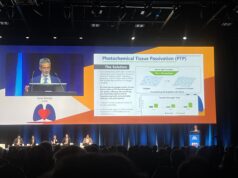By Martyn Thomas
As discussed in the January issue, the development of the transcatheter aortic valve implantation (TAVI) procedure has been actively underway in Europe since 2002. In the ensuing eight years, Europe has continued to be the stage upon which major developments with this technology have debuted, whether it relates to procedural refinement, device innovation, heart team training or clinical evaluation.
While still relatively early in its clinical application, TAVI has had several recent developments spurring the rapid progress of this extremely promising procedure for patients considered to be high-risk for traditional valve replacement, or inoperable.
The primary areas of advancement have focused on device evolution and clinical study of the procedure. Since the introduction of transcatheter valves commercially in 2007 – the Edwards Sapien valve and the CoreValve Revalving System – clinical experience has shaped the device attributes to better serve the needs of both clinicians and patients.
The introduction of a next-generation Sapien valve – the Sapien XT –, which is delivered transfemorally through an 18 French delivery system, creates a new environment for TAVI in Europe. While previously heart teams may have seriously considered valve French size as part of their treatment decision, they can now consider other attributes, including valve durability and performance, tissue characteristics, frame design, device height and delivery system features.
Companies also continue to innovate in the area of valve delivery. In addition to transfemoral delivery, there is a commercially available transapical option (delivered through a small incision between the ribs), and approximately a dozen companies are working on developing additional options, including an approach via the subclavian artery beneath the collarbone.
While technological innovation is an exciting area to watch in the TAVI space, what is of more interest to clinicians is the longer-term clinical performance of these devices. Two post-commercial TAVI registries are now underway in Europe, the most robust of which is SOURCE, which is currently at one-year follow-up. The CoreValve ADVANCE trial just began in March of this year.
SOURCE is following more than 1,000 patients receiving the Sapien valve, and has shown a one-year survival rate of 81.1% in transfemoral procedures and 72.1% in transapical procedures. These are encouraging outcomes that continue to add to the evolving body of clinical evidence demonstrating this is a viable option for high-risk patients. The CoreValve ADVANCE registry is expected to enrol approximately 1,000 patients and follow-up is projected to be completed in December 2016. These registries are important indicators of how the devices perform in a real-world setting, and can help us better understand how the learning curve for performing TAVI impacts patient outcomes.
What is more anticipated is the PARTNER Trial, the world’s first randomised, controlled pivotal trial of a transcatheter aortic valve, taking place in the USA. This unique trial will help us better understand how TAVI compares to the conventional treatments of non-surgical/medical management therapies and surgical aortic valve replacement. Results from the non-surgical portion of the trial are expected later this year. These data may begin to give clinicians who have been watching the development of this technology from the sidelines more confidence in exploring this procedure.
The rapid progress in device innovations and clinical results in this space are enabling us to help more people than ever before, and the technology continues to show promise for patients suffering from severe aortic stenosis.
Martyn Thomas is the director of cardiothoracic services at Guys and St Thomas’ Hospital in London, UK, and serves as one of the principal investigators for the SOURCE registry.










